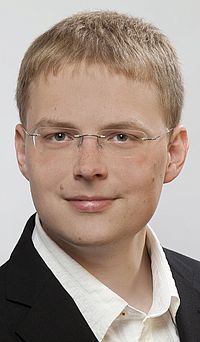Sven Marquardt
Doctoral student

Christian-Albrechts-Universität zu Kiel
E-mail: marquardt(at)math.uni-kiel.de
Telephone: +49 431 880-2791
Homepage: http://www.math.uni-kiel.de/geometrie/de…
Project
32Asymptotic geometry of the Higgs bundle moduli space
Publications within SPP2026
We give a topological classification of Lawson's bipolar minimal surfaces corresponding to his ξ- and η-family. Therefrom we deduce upper as well as lower bounds on the area of these surfaces, and find that they are not embedded.
Related project(s):
25The Willmore energy of degenerating surfaces and singularities of geometric flows67Asymptotics of singularities and deformations
We obtain estimates on nonlocal quantities appearing in the Volume Preserving Mean Curvature Flow (VPMCF) in the closed, Euclidean setting. As a result we demonstrate that blowups of finite time singularities of VPMCF are ancient solutions to Mean Curvature Flow (MCF), prove that monotonicity methods may always be applied at finite times and obtain information on the asymptotics of the flow.
Related project(s):
25The Willmore energy of degenerating surfaces and singularities of geometric flows67Asymptotics of singularities and deformations
We demonstrate that the property of being Alexandrov immersed is preserved along mean curvature flow. Furthermore, we demonstrate that mean curvature flow techniques for mean convex embedded flows such as noncollapsing and gradient estimates also hold in this setting. We also indicate the necessary modifications to the work of Brendle-Huisken to allow for mean curvature flow with surgery for the Alexandrov immersed, 2-dimensional setting.
Related project(s):
25The Willmore energy of degenerating surfaces and singularities of geometric flows67Asymptotics of singularities and deformations
We provide a posteriori error estimates in the energy norm for temporal semi-discretisations of wave maps into spheres that are based on the angular momentum formulation. Our analysis is based on novel weak-strong stability estimates which we combine with suitable reconstructions of the numerical solution. We present time-adaptive numerical simulations based on the a posteriori error estimators for solutions involving blow-up.
Related project(s):
67Asymptotics of singularities and deformations

